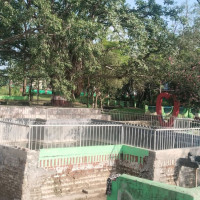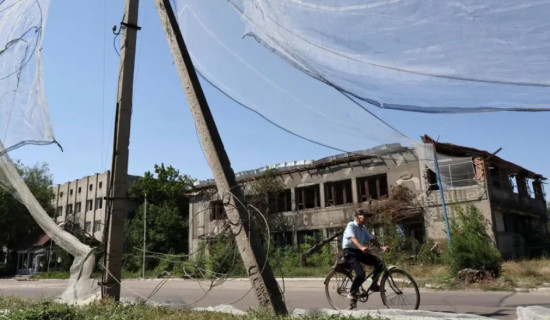- Thursday, 17 July 2025
Roasting corn on roadside: A daily grind for survival
By Erisha Sharma,Kathmandu, June 18: Priya Bhandari, a widow, has been operating a roadside corn stall at Purano Baneshwor for the past three years to support her household and her six-year-old daughter’s education.
Roadside corn roasting is a small-scale way for people to earn money. Vendors move around without fixed stalls and sell roasted corn to meet daily expenses for food, rent, and school fees of their wards. Their income varies each day and depends on things like fuel prices.
The business of roasted corns booms particularly during the maize season, mostly between Jestha (June) and Kartik (October), when fresh corn becomes widely accessible. Vendors source maize from local wholesale markets such as Kalimati and Balkhu and set up grills along footpaths, near bus stops, or in crowded market areas.
“It’s not easy to stand all day in front of burning coal, but as long as it helps put food on the table and supports my daughter’s education, I will not give up,” said Priya. However, without a permanent stall, she adjusts her position daily based on foot traffic, weather, and occasional interference from local authorities.
Similarly, Dil Kumari started roadside corn vending at Chaysal, Lalitpur, two years ago. “The income of my husband alone cannot support the finances and education of my family, so I do my best to support him,” said Dil Kumari.
Most vendors run their seasonal business of roasted corn without fixed stalls. Many set up on roadsides and adjust their locations daily based on foot traffic and municipal activity. The daily income generated from roasted corn vending ranges between Rs. 1,000 and Rs. 1,500, as shared by Bhandari and Dil Kumari.
Operating costs include raw corn purchases, charcoal or firewood, salt and chili paste, and transport expenses. For vendors like Priya Bhandari, this leaves a narrow profit margin after covering supply costs.
In Lalitpur, Krishna Bahadur, a 73-year-old man, sells approximately 40 cobs per day. His setup, unlike many others, is permanent at a fixed spot. He has constructed portable plastic roofs and temporary overhead. This has made rainy weather, previously a barrier to consistent earnings, now being more profitable to attract customers.
“Selling corn helps me earn a small amount of pocket money and meet my family’s basic needs,” he said.
A typical corn cob purchased at Rs. 15 is sold for Rs. 30, doubling the base value.
However, unsold stock, fuel price fluctuations, and the lack of cold storage options can reduce actual profit. Charcoal prices, in particular, have seen a steady increase, directly impacting daily operating costs.
Shyam B.K. has been selling corn in Patan for last three years on a makeshift shelter. These makeshift shelters allow him to continue operations even on rainy days. He has mentioned makeshift shelter being helpful to increase his sales. He said, “It is easier to travel around with makeshift shelter.’’
















